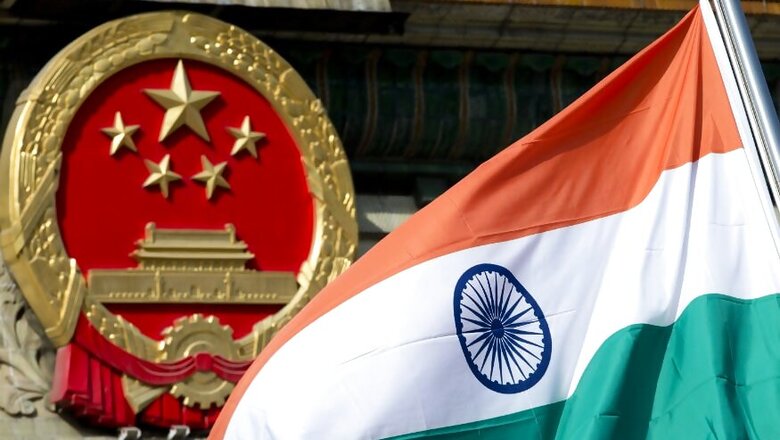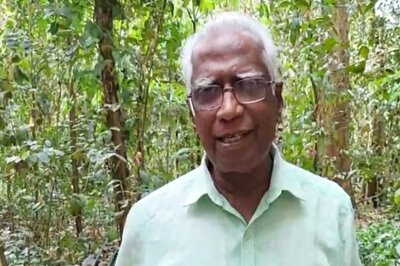
views
The first reported clash between Indian and Chinese soldiers along the Line of Actual Control (LAC) occurred on May 9 in the area of Nakula in north Sikkim. The Indian Army statement on the incident was brief and factual: "Aggressive behaviour by the two sides resulted in minor injuries to troops. The two sides disengaged after a dialogue and interaction at local level.”
Subsequent reports indicated that an earlier clash between the two armies had occurred around May 5 in eastern Ladakh. This was apparently more serious, with a large number of soldiers on both sides getting injured. There were some initial attempts to downplay the incidents, but with the passage of time, the situation is developing into a matter of some concern.
Official news is hard to come by, but the PLA seems to have brought in a large number of soldiers and transgressed in multiple areas in eastern Ladakh. The stance of both sides is reflected in the statements given out by the foreign ministries. The Chinese Ministry of Foreign Affairs statements on May 19 and 21 talked about the Indian Army crossing into its territory, “blocking” PLA patrols and “attempting to unilaterally change the status”.
The Chinese spokesperson also stated, "China's border troops firmly safeguard China's territorial sovereignty and security and firmly deals with the Indian side’s crossover and infringement activities."
India’s Ministry of External Affairs (MEA) rejected Beijing’s allegations. The MEA spokesperson stated, “Any suggestion that Indian troops had undertaken activity across the LAC in the Western Sector, or the Sikkim Sector is not accurate…All Indian activities are entirely on the Indian side of the LAC. In fact, it is the Chinese side that has recently undertaken activity hindering India’s normal patrolling patterns.”
LAC transgressions are not new. As per media reports, there were 497 Chinese transgressions in eastern Ladakh in 2019. On a non-demarcated border, there would be differing perceptions on the exact alignment of the boundary in some areas, and this is reflected in the official statements by the two sides.
Both countries blame the other for crossing the LAC and blocking legitimate patrolling activity. This has been the norm for many years, and most local disputes get resolved quickly through meetings between local military commanders. There have been some standoffs like Chumar and Dokalam that required diplomatic intervention, but these were again geographically restricted to one area and ultimately resolved peacefully.
The current standoff in eastern Ladakh is different from the past in a few ways. The transgressions by the Chinese soldiers are at multiple locations and in large numbers. What is worrying is that these transgressions are at locations like Galwan where there has never been a dispute about the LAC alignment. The Chinese actions seem to be well-coordinated and would have been planned at the highest level. It does not appear to be an act executed by some local military commanders.
The level of physical violence that accompanied the latest set of incidents is unprecedented. It has been reported that the PLA troops in the Pangong Tso transgression came armed with batons and rods. The tensest of standoffs between soldiers of the two sides in the past have been marked by a remarkable degree of restraint and an understanding of not using force. If this restraint breaks down, each transgression (more than 600 annually) could become a mini-battle.
The Chinese moves on the border also come at a time when the coronavirus is causing a global geopolitical churning. The US-China cold war has intensified as both countries vie for a leadership role in the post-Covid 19 world. The Chinese leadership is using its economic and military power, combined with an intense propaganda campaign, to show that it has not been weakened due to the pandemic. In these circumstances, even local incidents along the LAC can acquire a larger meaning.
It would be naive to buy the story that the blocking of PLA patrols has led to this escalation. In past standoffs like Chumar and Dokalam, the demands of both sides were explicit and geographically limited to a specific area, e.g., stopping the construction of a particular road. In the current case, there is a great deal of uncertainty about Chinese intentions and motives behind triggering the current crisis. A lack of clarity about intentions leads to assumptions of worst-case scenarios and the tendency to take higher risks than usual.
Different reasons are being ascribed to the Chinese moves in Ladakh and Sikkim. Whatever be the motivation, the more important point is that the Chinese behaviour carries enormous dangers. From Nathu La in 1967 to Wangdung in 1987, and the more recent incidents in Ladakh, Sikkim, and Arunachal Pradesh, attempts to put military pressure on India have rarely yielded big dividends for the Chinese. If nothing else, this reading of history should force a rethink on further Chinese adventurism in Ladakh.
The situation along the LAC needs to be defused at the earliest. India and China have handled their border issues in the past without a shot having been fired at each other since 1975, and there are sufficient lessons that can be applied to restore calm. However, if the standoff drags on, nationalistic fervour is bound to kick in, and the resultant public groundswell would restrict the options available to political leaders on both sides to resolve the issue.



















Comments
0 comment